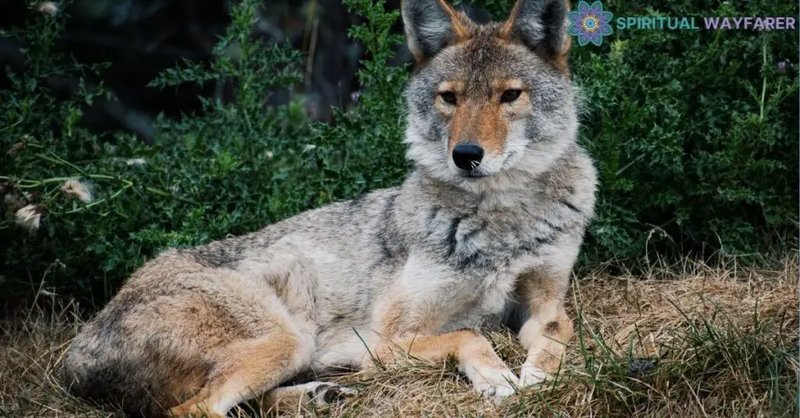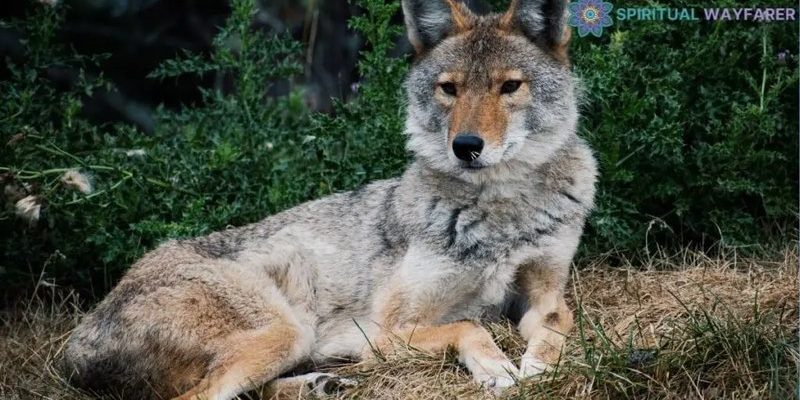
Think of the coyote as a trickster, much like how we view the fox in various stories. This idea of trickster figures exists in many traditions, acting as both a source of wisdom and folly. Coyotes are known for their adaptability and cunning, qualities that make them stand out in stories and legends. So, let’s dive deeper into their representation and significance in different cultural contexts. You might be surprised by what you learn!
The Coyote in Native American Mythology
One of the richest sources of coyote folklore comes from Native American traditions. Many tribes, including the Navajo and Lakota, view the coyote as a trickster figure. They tell stories of coyotes outsmarting other animals or even humans, often leading to lessons about humility and the consequences of pride. For instance, in Navajo stories, the coyote sometimes acts impulsively, resulting in humorous yet important life lessons.
These tales often reflect the tribes’ deep connection with nature and their understanding of the balance of life. The coyote represents duality—both good and bad, wise and foolish. In some stories, the coyote creates the world or brings fire to humanity, showcasing a more benevolent side. This complexity makes the coyote a compelling figure that resonates across generations.
Let’s not forget that these tales were not just for entertainment. They often served as moral guidance, teaching younger generations about community values and survival skills. Coyote’s actions in these stories could be seen as a reflection of human behavior, helping people navigate their own lives.
The Coyote in Popular Culture
Fast forward to modern times, and you’ll find the coyote has also made its mark in popular culture. Movies, cartoons, and even music have adopted this lovable yet mischievous character. Think about Wile E. Coyote from the *Looney Tunes*. He’s a perfect example of the trickster archetype—always chasing after the elusive Road Runner but never quite succeeding. Honestly, this character not only provides laughs but also offers a deeper look at perseverance and resilience.
Coyote’s presence in pop culture isn’t limited to cartoons. In films like *Thelma & Louise*, the coyote symbolizes freedom and the wild spirit of the American West. The coyote in these contexts often stands for the untamed, reminding us of the wildness that’s inherent in nature and ourselves.
It’s fascinating how these representations can shift meaning based on context. In one moment, the coyote might be viewed as a silly character, while in another, it embodies deeper themes of survival, freedom, and the struggle against the odds.
Coyote in Literature and Folktales
Coyote also plays a significant role in literature, often appearing in stories that explore themes of transformation, identity, and the human experience. Authors like Leslie Marmon Silko and Sherman Alexie incorporate the coyote into their works, highlighting its significance in Native American culture and its universal themes. In their stories, the coyote often acts as a bridge between the past and the present, connecting traditional beliefs with contemporary issues.
The coyote’s role in these tales often mirrors human struggles, showcasing a variety of emotions and experiences. From trickery to wisdom, the coyote embodies the complexities of life itself. For example, in many stories, coyotes face challenges that reflect our own, such as the quest for belonging or the need for survival.
These literary representations often encourage readers to reflect on their values and choices. By examining the coyote’s journey, we can gain insights into our lives, prompting us to think critically about our actions and their impact on the world around us.
Symbolism of the Coyote
What does the coyote symbolize in different cultures? You might be surprised to learn that its meanings can vary widely. In some Native American traditions, the coyote symbolizes adaptability and cleverness, while in other cultures, it can represent danger or unpredictability. This duality makes the coyote a rich symbol, capable of embodying multiple aspects of life.
The coyote’s ability to thrive in various environments reflects its symbolism related to survival and resilience. This adaptability resonates with people’s experiences, reminding us that change is a natural part of life. Just like the coyote, we often have to navigate challenges and find our own paths to success.
In modern contexts, the coyote can also symbolize the spirit of the land and the wildness that many feel is being lost in urbanization. As more natural habitats are destroyed, the coyote remains a reminder of the wilderness and nature’s raw beauty. This connection urges us to respect and protect the environment, highlighting the importance of harmony between humans and nature.
The Coyote as a Teacher and Guide
In many stories, the coyote acts as a teacher, imparting wisdom through its antics. This idea of the coyote as a guide isn’t just limited to Native American tales; it stretches across cultures. The lessons learned from the coyote often revolve around humility, self-awareness, and the importance of community.
For instance, in some stories, when characters underestimate the coyote, they learn the hard way that cleverness and cunning can sometimes outsmart brute strength. This is a classic lesson about recognizing one’s own limitations and respecting others’ abilities.
Many people find inspiration in these stories. They can serve as gentle reminders that life is filled with lessons, whether we see them coming or not. By embracing the coyote’s teachings, we can navigate our own lives with a bit more grace and understanding.
The Coyote’s Role in Conservation and Ecology
Finally, it’s essential to acknowledge the ecological significance of the coyote. In recent years, conservationists have highlighted the role coyotes play in maintaining balance within ecosystems. As both predator and prey, they help control populations of other species, contributing to biodiversity.
Understanding the coyote’s role in nature helps us appreciate its value beyond folklore. Coyotes are adaptable and resilient creatures, often thriving in urban environments where their natural habitats are encroached upon. Their presence can indicate a healthy ecosystem, reminding us of the intricate web of life we are all part of.
Moreover, the coyote’s story in conservation reflects our need to coexist with wildlife in a rapidly changing world. It challenges us to reassess our relationship with nature and consider how we can ensure that these fascinating creatures continue to thrive.
Closing Thoughts on the Coyote’s Cultural Significance
The coyote is more than just a clever animal; it’s a symbol that has navigated through cultures and time, embodying lessons that are as relevant today as they were hundreds of years ago. Whether as a trickster in Native American folklore, a character in pop culture, or a vital part of our ecosystem, the coyote teaches us about adaptability, resilience, and the importance of community.
By understanding the coyote’s representation in culture and folklore, we can gain a deeper appreciation for both the animal itself and the stories that shape our perceptions of the natural world. Let’s carry these lessons forward, respecting the coyote and the rich tapestry of meanings it brings to our lives.

